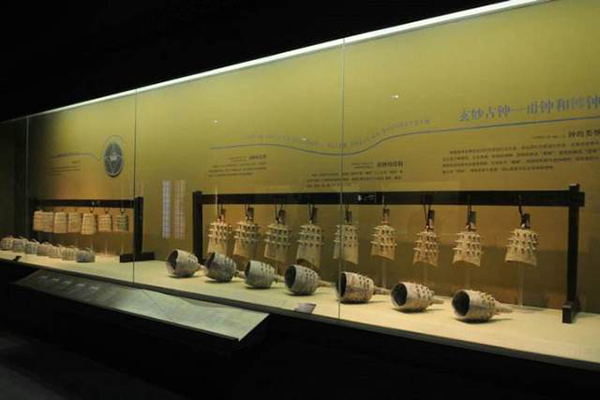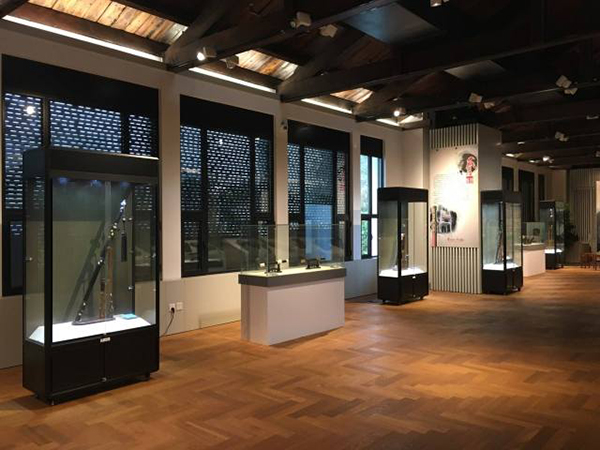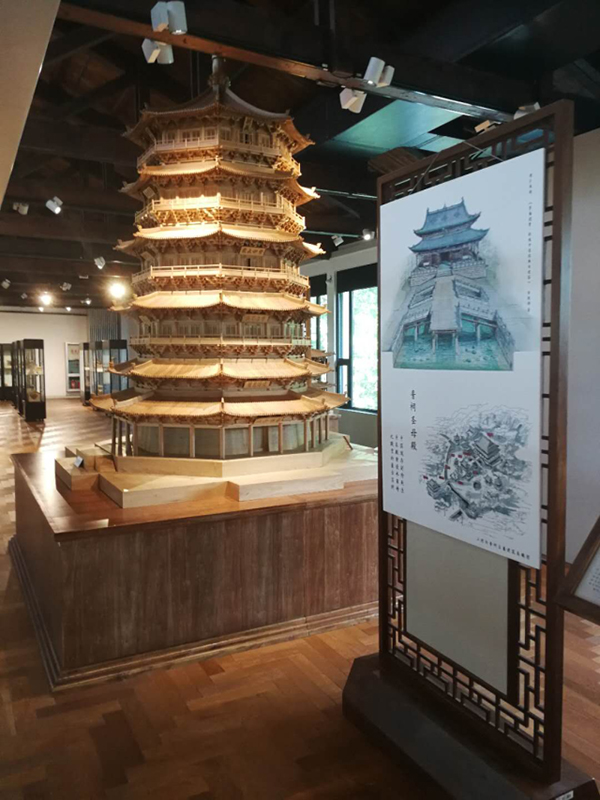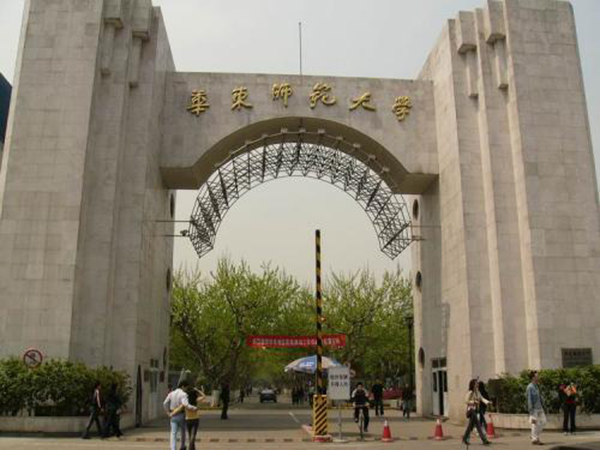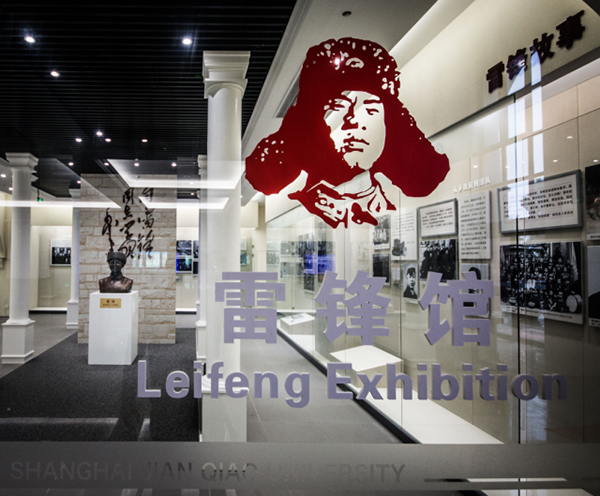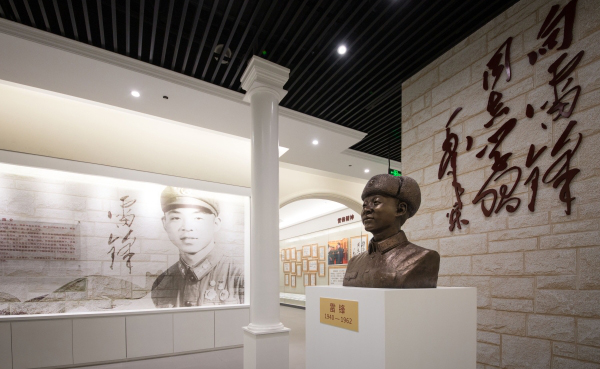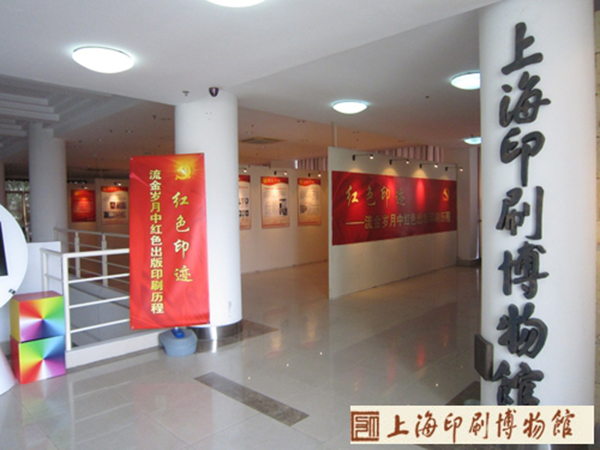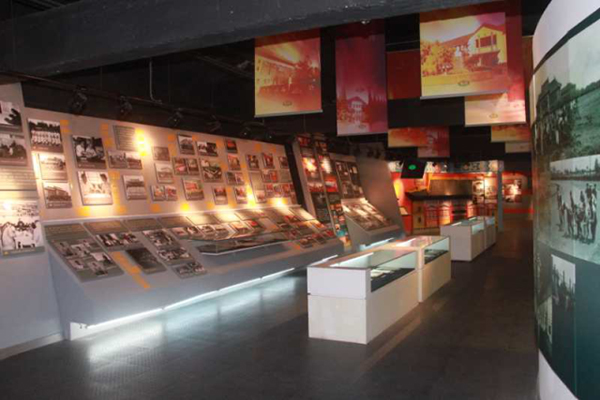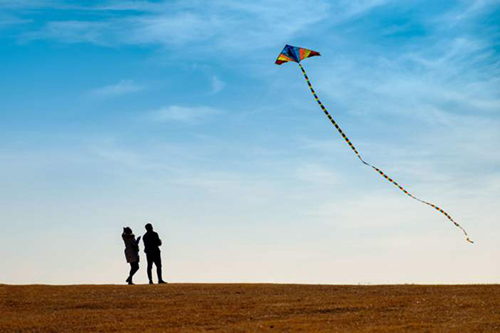The pictures in this article are all from the Cultural Security Branch of Shanghai Public Security Bureau.
The first museum in the world originated from universities, and university museums are rooted in the deep soil of university culture, which is an important symbol of the profound academic and cultural accumulation of universities. Let’s discuss how to build a museum in a university.
1. Shanghai Jiaotong University School History Museum
No.1954 Huashan Road, Xuhui District
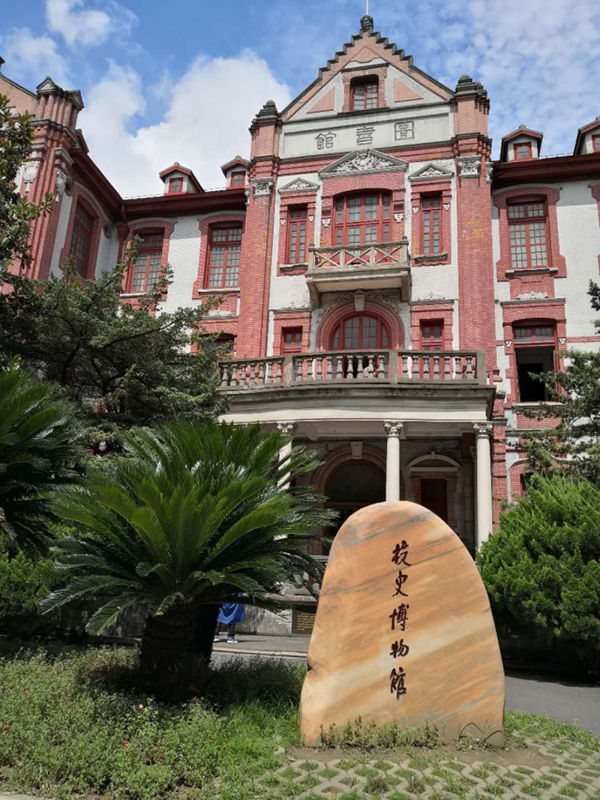
The exhibition hall of the school history museum has a total area of about 600 square meters, with three exhibition halls. The first exhibition hall spans from the establishment of Nanyang Public School to the liberation of Shanghai, and is divided into three periods: "the establishment of Nanyang Public School", "the construction of a modern engineering university" and "Jiaotong University combining science, engineering and management". The time span of the second exhibition hall has been from the liberation of Shanghai to the present. Nearly 700 precious cultural relics, documents, photographs and other materials are exhibited in these two exhibition halls, which reflect the development course of the school for more than a century and the fruitful achievements of academic research. The third exhibition hall is the performance exhibition of academicians of Shanghai Jiaotong University. Nearly 200 academicians of China Academy of Sciences and China Academy of Engineering who studied or taught in Jiaotong University were exhibited, and their biographies and major achievements were introduced in order of birth date. There is also Professor Lin Tongyan’s Exhibition Room in the third exhibition room, which displays more than 300 photos, works, papers and pictures of Mr. Lin Tongyan, a famous alumnus of Jiaotong University, an internationally renowned structural engineer, educator and Chinese American scholar.


Opening hours: every Tuesday to Sunday, from 9: 00 to 17: 00, and the telephone numbers are 62932403 and 62932326.
Route: Take bus Xumin Line and get off at Xujiahui Station, and walk for about 1.1 kilometers.
2. Shanghai Fudan University Museum
220 Handan Road, Yangpu District
Fudan University Museum is located in Fudan University, No.220 Handan Road. The museum showroom has a total area of about 800 square meters and is divided into two fixed exhibition halls-Gaoshan folk cultural relics exhibition and cultural relics teaching specimen exhibition, and two temporary exhibition halls. The museum has a collection of more than 2,000 pieces, which are donated by Henan Provincial Museum, Luoyang Cultural Relics Team, Shanghai Museum and other units, as well as the old collections of Fudan University Library, Wenbo College and Biology Department.
Museum fixed exhibition hall
Gaoshan folk cultural relics exhibition: the exhibits in the museum-Gaoshan exhibits were collected by Professor Liu Xian from the Biology Department of Fudan University in the 1920s from the Gaoshan settlements in Taiwan Province; The exhibition selected more than 100 pieces from its 400-odd collections, combined with documents and pictures, reflected the traditional customs and culture of Gaoshan people from various angles, and made some restorative scenes. Under the illumination of special spotlights for the exhibition, the whole exhibition was very bright, beautiful and lively.
Exhibition of teaching specimens of cultural relics: There are nearly 200 pieces of cultural relics of past dynasties, such as copper, pottery, porcelain, stone, jade, bamboo and wood ware, etc. This exhibition mainly serves the professional teaching of the Department of Culture and Art, and it has also become a place for non-professional audiences to cultivate their sentiments and appreciate ancient material culture because of the appropriate artistic expression and easy-to-understand text description.
Temporary exhibition hall of museum
The two temporary exhibition halls hold exhibitions of various collections or foreign art works. The exhibitions that have been held include the Picture Exhibition of Fudan University’s history of more than 90 years, the Introduction Exhibition of Hong Kong University, Guizhou Nuo Sculpture Art Exhibition, American Abstract Art Exhibition, American Indian Art Exhibition and Japanese Kikukawa Guofu Calligraphy Exhibition.
Opening hours: every Tuesday, Thursday and Friday, from 14: 00 to 16: 00 (except winter, summer and holidays). Group visits are reserved in advance and are not subject to the above time limit).
Route: Bus No.118, get off at Fudan University Station, and walk for about 1 km.
3. Shanghai Tongji University Museum
1239 siping road.
Tongji University Museum is located in the 129 building of Tongji University, No.1239 Siping Road, with an exhibition area of about 2,000 square meters. Tongji University Museum, as a historical building with a mixed structure of brick and wood, retains the internal and external formal features of the building to the maximum extent. The two-story high-rise room has a clear contrast between the old and new elements and a clear handover.
Recent exhibition in the museum: "Red Soil Muxia-2018 Australian Aboriginal Artists and China Artists (Shanghai) Joint Exhibition". This exhibition mainly displays 50 paintings, sculptures and ceramic artworks created by Australian aborigines, and 20 works by China artists who have visited Australian aborigines’ tribes reflecting the life of Australian aborigines. The exhibition will last until July 30th.
Opening hours: Monday to Saturday from 8: 30 to 16: 30 (except winter and summer holidays and legal holidays).
Route: Take Metro Line 10 to Tongji University Station and walk about 180 meters.
4. Shanghai University of Finance and Economics Business Museum
No.777 Guoding Road, Yangpu District
The Business School Museum of Shanghai University of Finance and Economics is located in Yuheng Building, No.777 Guoding Road Campus. The Business School Museum is centered on the Business School Museum, supplemented by the Insurance Museum, the Tax Bill Museum, the Currency Museum and the Computer Museum. It displays the evolution and development of China’s century-old higher business education in a panoramic and multi-dimensional way. At present, the Currency Museum and the Computer Museum are under renovation and are closed to the public.
You need to make an appointment on the campus network in advance to visit the Business Museum. The opening hours are from 13: 30 to 16: 30 every Tuesday, Thursday and Saturday.
Route: Take Bus No.406 and get off at Guoding Road, and walk for about 280 meters.
5. Shanghai University Museum
2695 Hutai Road
The Shanghai University Museum is located in the east of the headquarters (No.333 Nanchen Road, Baoshan District). The museum has more than 6,000 pieces (sets) with an area of 4,200 square meters. The future exhibition will show Shanghai (maritime) art and reflect the history of Shanghai University, supplemented by temporary exhibitions, serving the discipline construction of Shanghai University and the alumni of teachers and students, and will be open to the whole society free of charge. The current curator of Shangda Museum is Associate Professor Liu Shaoxue, and the curator of Shanghai Museum, Mr. Chen Xiejun, and other experts in the field of cultural relics museum science and Shanghai culture research inside and outside the school form an advisory committee.
Shanghai University Museum is a member of the Professional Committee of University Museums of China Museum Association and a member of the National Alliance of University Museums for Educating People. It plays the role of museum education through temporary exhibition activities and volunteer work.
Opening hours: Monday to Friday from 8: 00 to 16: 00.
Route: Take Metro Line 7 to Shangda Road Station, exit 3, and walk for about 850 meters.
6. Shanghai University of Traditional Chinese Medicine Museum of Traditional Chinese Medicine
No.1200, Cai Lunlu, Pudong New Area

Shanghai museum of tcm is a national popular science education base, a national traditional Chinese medicine culture publicity and education base, a national 3A-level tourist attraction and a Shanghai patriotism education base. Shanghai museum of tcm was founded in 2003, formerly known as the Museum of Medical History of Chinese Medical Association, which was founded in 1938. The museum has a building area of 6,314 square meters and an exhibition area of 4,050 square meters, and there is a "Herb Garden" of nearly 10,000 square meters outside the museum. The basic exhibition is divided into eight topics: primitive medical activities, ancient medical and health remains, medical management of past dynasties, medical collections of past dynasties, health culture, modern maritime Chinese medicine, herbal prescription appreciation and contemporary Qihuang new look, which reflect the main achievements of Chinese medicine in various historical periods and predict its bright future development.

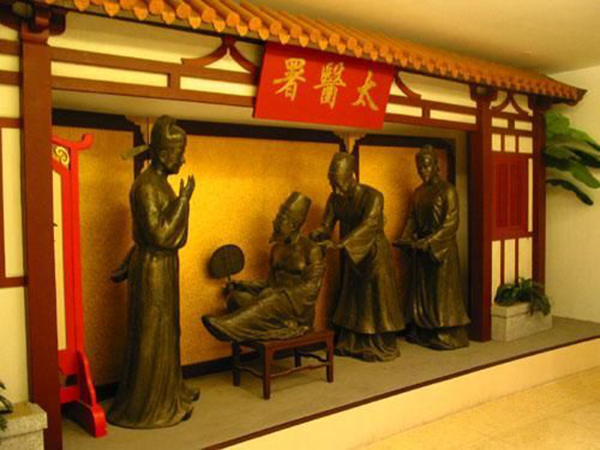
Opening hours: 9:00~16:00 (Tuesday to Sunday) and closed on Monday.
Route: Take Bus No.1057 to Cai Lunlu Huatuo Road Station and walk for about 120 meters.
7. Donghua University Textile and Apparel Museum
849 Zhongshan West Road
The existing building area of the exhibition hall is more than 6,700 square meters, and the exhibition area of the first phase is more than 3,000 square meters. It is divided into four branches: the popular science museum, the ancient museum, the modern museum and the minority museum.
The first floor of the Exhibition Hall of the Textile and Apparel Museum of Donghua University is the Popular Science Museum, which displays the industrial chain and its characteristic links in the field of textile and apparel in the form of dynamic and static display, supplemented by high-tech display means and interactive exhibitions, and popularizes the scientific and cultural knowledge of textile and apparel. The interactive exhibition area is an important feature of the Science Museum, where a variety of interactive projects such as spinning, weaving, dyeing and clothing design are concentrated, including computer embroidery, knitting and weaving, ink-jet printing, hand-painted T-shirts, buckle knot making, jewelry DIY, dress consultant and digital stitching of clothing styles, etc. Visitors can experience these production and design processes and walk into textiles and clothing.
The second floor is the Ancient Museum, which displays the pictures and objects of textiles and garments in different periods in ancient China, and shows the development of ancient fabrics and textile appliances and the evolution of garments in past dynasties. From the ju loom in the pre-Qin period, the heald loom, the multi-heald multi-nie loom in the Han dynasty and the Zhuang bamboo cage loom in the Song dynasty, to the large jacquard machine representing the highest level of hand-woven satin and circular flower in the Ming and Qing dynasties; At the same time, it shows four famous Chinese brocade with rich colors and exquisite craftsmanship, namely Shu Brocade in Han and Tang Dynasties, Song Brocade and Zhuang Brocade in Song and Yuan Dynasties and Yun Brocade in Ming and Qing Dynasties.
On the third floor, there are the Modern Museum and the Minority Museum. The Modern Museum mainly displays the physical objects and image materials of modern China textile and clothing. The exhibits are mainly China traditional clothing, including related accessories. The contents are divided into three parts: women’s clothing, men’s clothing and children’s clothing. The fabrics of the clothes basically cover the fabric types at that time, reflecting the evolution of modern textile and clothing from the late Qing Dynasty to the Republic of China. The National Minority Pavilion displays the textile processing and the costumes of ethnic minorities through physical scenes, pictures and multimedia presentations.
Opening hours: every Tuesday to Saturday (9:00~16:00), and arrangements will be announced separately during national holidays and winter and summer vacations.
Route: Take Metro Line 4 to Exit 2 of Yan ‘an West Road Station and walk for about 1.1 kilometers.
8. China Fish Culture Museum of Shanghai Ocean University.
No.318 Jungong Road, Yangpu District

China Fish Culture Museum of Shanghai Ocean University is located at No.318, Jungong Road, Yangpu District, Shanghai. It is a popular science education base for aquatic organisms in Shanghai and one of the national culture museums in Shanghai universities. It has a total construction area of 1,036 square meters, 40,000 specimens, about 3,000 species and more than 1,000 species on display. In 1952, Zhu Yuanding, a famous ichthyologist, founded the Fish Specimen Room of Shanghai Fisheries University. In the early days of its establishment, equipment, personnel and funds were very tight. Zhu Yuanding led his colleagues to overcome many difficulties, and started to collect fish specimens and materials by himself. In just a few years, the herbarium has collected more than 900 species and more than 25,000 specimens, forming an elementary scale and soon becoming an important base for ichthyology research in China. Since then, the specimen room has been renamed the fish research room. By the year 2000, the fish laboratory had been one of the four bases for studying fish taxonomy in China.
In 2002, the laboratory obtained the largest sperm whale specimen in China with a length of 18.4 meters. Subsequently, the laboratory was upgraded and evolved into the whale hall of Shanghai Fisheries University.
At the end of 2005, the China Fish Culture Museum was unveiled in the former Shanghai Fisheries University at No.334 Jungong Road. At the same time, Shanghai Fisheries University and Shanghai Ocean Aquarium signed a cooperation agreement, which opened the prelude to the establishment and protection of fish culture in China.
Nowadays, Shanghai Ocean University is moving to the new campus of Nanhui Lingang, and the China Fish Culture Museum will be renamed again. Starting from 2008, the new campus will build the first museum with the theme of ocean in China, realizing the transformation from fish culture to marine culture. The building area of the new museum will reach 7,000 square meters, and 12 exhibition halls will be set up, including Fish Culture Museum, Fishery History Museum, Fishing Gear and fishing method Pavilion, which will become a professional museum integrating teaching, scientific research, popular science and cultural heritage.
Opening hours: 24 hours a day.
Route: Take Metro Line 12 to Exit 2 of Aiguo Road Station and walk for about 1.3 kilometers.
9. Shanghai University of Science and Technology Printing Museum
No.100 Shuifeng Road
The Printing Museum of University of Shanghai for Science and Technology was founded in 1998. It is located on the fourth floor of the library of the School of Publishing, Printing and Art Design of University of Shanghai for Science and Technology. The exhibition hall covers an area of about 1,000 square meters. The museum consists of a historical museum and an equipment museum. The exhibition hall consists of five parts: the origin and development of printing, the introduction and development of modern printing, the start-up and revitalization of national printing industry, the modernization process of Shanghai printing industry and the exhibition of modern Shanghai printing products. The representative cultural relics and materials are displayed, including printing equipment such as printed pottery and wooden movable type, FM network prints, pure gold-plated prints, digital prints and related audio-visual materials, and the exhibition form.

Opening hours: every Tuesday and Friday from 09: 00 to 11: 30; 14:00~16:00。
Route: Take Metro Line 12 to Exit 4 of Longchang Road Station and walk for about 1.2 kilometers.
10. Biology Museum of East China Normal University
Floor 2, Experimental Building B, No.500 Dongchuan Road
The Biology Museum of East China Normal University was founded in 1952, relying on the School of Life Sciences of East China Normal University. The museum has a long history and a rich collection, including animal specimens such as birds, insects, mammals, amphibians, fish and invertebrates, as well as various plant specimens such as seeds, ferns, mosses and algae, with a total of tens of thousands of specimens. Among them, it also includes specimens of many rare animals, including giant pandas, Chinese alligators, crested ibis and sunbirds. The Museum of Biology also has a variety of multimedia videos of biology, in order to help visitors understand the "story behind" of animal and plant specimens more intuitively and deeply.
Opening hours: It is open to the public every Tuesday, Thursday and Saturday (except national statutory holidays).
Route: Bus No.958, get off at Lianhua South Road Station of Dongchuan Road and walk for about 530 meters.
11-1. Museum of Shanghai Normal University
4th Floor, Wenyuan Building, No.81 Guilin Road
Shanghai Normal University Museum is located in Wenyuan Building, Shanghai Normal University, No.100 Guilin Road, Xuhui District, Shanghai. The collection in the museum was formed in the 1950s, and it was officially built in 2001. It has a building area of over 740 square meters, and belongs to an artistic museum, covering more than 2,000 pieces of ceramics, bronzes, calligraphy and painting, jade articles, steles, ethnic minorities and religions. The age spans from Neolithic to contemporary, and the most distinctive features are Tibetan Thangka.
Features: The collection includes jade articles, bronzes, ceramics, inscriptions, calligraphy, paintings, thangkas, costumes, embroidery, etc., among which there are many treasures. The Neolithic jade wares were regular in shape and polished smoothly, reflecting a high level of craftsmanship. Mao Gongding, a three-dimensional rubbing, belongs to the original refined rubbing; The scriptures written by Sui monks and translated by Xuanzang are rare cultural relics. Sheep brain paper gold juice book Tibetan infinite life Buddhist sutra, Tibetan Buddha’s illusion network continued secret sutra, is a rare treasure; Thangka is mostly written in the Qing Dynasty, which has national characteristics. Among the paintings, Wang Yuanqi and Wu Li’s landscape paintings are also excellent; The figure painting of the Qing Palace Temple is also a rare exhibit in Shanghai. The official kiln porcelain from the court is exquisite and gorgeous, showing the unique bearing of the royal family. Shanghai University Porcelain Museum is built on the basis of the porcelain collection of Shanghai Normal University Museum. The collected ceramics started from the painted pottery of Majiayao culture in the prehistoric culture period, and went through various practical and buried ceramics in the Han Dynasty, the Jin Dynasty, the Southern and Northern Dynasties and the Sui Dynasty, including glazed porcelain and tricolor porcelain in the Tang Dynasty, monochrome glazed porcelain, carved porcelain and piled porcelain in the famous kilns in the Song Dynasty, carved porcelain in Xixia, decals, blue-and-white glazed porcelain in the Yuan Dynasty and the Ming Dynasty, and multicolored, pastel, doodle and blue-and-white glazed porcelain in the Qing Dynasty. The collection covers various famous historical kilns such as Ru Kiln, Jun Kiln, Ge Kiln, Longquan Kiln, Jizhou Kiln, Dehua Kiln and Jingdezhen Kiln, which basically reflects the brief history of the development of China ceramics.


Opening hours: Monday to Friday from 8: 00 to 11: 00 and from 13: 30 to 16: 30.
Weekends, national holidays, winter and summer vacations need to be reserved in advance.
Route: Take bus Xumin Line to Humin Road and get off at Guilin Road Station and walk for about 1.6 kilometers.
11-2. Shanghai Normal University "Comfort Women" History Museum
No.100 Guilin Road
On October 22nd, 2016, the China Museum of Comfort Women held an opening ceremony in Shanghai Normal University, located in Wenyuan Building of Shanghai Normal University. The museum contains a collection of commemorative cultural relics donated by survivors of the comfort women system, and it is the only museum in Chinese mainland with the theme of preserving the evidence of the tragic situation of comfort women.
Features: The only museum in China with the theme of preserving the evidence of the tragic situation of "comfort women".
Opening hours: Tuesday to Sunday from 9: 00 to 16: 00 (closed on holidays, winter and summer vacations).
Route: Take bus Xumin Line to Humin Road and get off at Guilin Road Station and walk for about 1.3 kilometers.
12. Shanghai Conservatory of Music Oriental Musical Instrument Museum
No.20, Lane 18, Gaoan Road, Xuhui District

Shanghai Oriental Musical Instrument Museum is the first musical instrument museum in China’s art colleges. Construction began in the summer of 1985, and its predecessor was "China National Musical Instrument Exhibition Hall" and "Oriental Musical Instrument Exhibition Hall". Inspired by Comrade Jiang Zemin’s inscription "Running First-class Music Education, Creating International Advanced Level", it was expanded into "Oriental Musical Instrument Museum" in 2001, with the name inscribed by the old dean He Lvting. The total area of the exhibition hall is about 1200M2. It is divided into four exhibition areas: China ancient musical instruments, China modern musical instruments, minority musical instruments and foreign national musical instruments, and a multimedia exhibition hall. There are more than 400 kinds of musical instruments in the Oriental Musical Instrument Museum of Shanghai Conservatory of Music. It can be divided into four parts: China ancient musical instruments, China modern musical instruments, China minority musical instruments and foreign minority musical instruments. China ancient musical instruments mainly include: Jia Hu bone flute, 48-piece large chimes, 32-piece chimes, bronze drums in Han Dynasty, lyre in Ming Dynasty, etc. Modern musical instruments in China are exhibited in wind instruments, stringed instruments, plucked instruments and percussion instruments. China’s minority musical instruments include Bawu, Mudi, Dong Di, Zhandi, Lerong, Lusheng and Hulusheng. Ma Guhu, Ai Jieke, Hu Xita and other stringed instruments; Dongbula, Komz, Rewap, Zamunie and other plucked instruments; Dabu, Sabayi, Elephant Horn Drum and other percussion instruments. Foreign minority musical instruments include various musical instruments of Korea, India, Japan, Indonesia, Thailand, Russia, Australia, West Africa and other countries and regions.

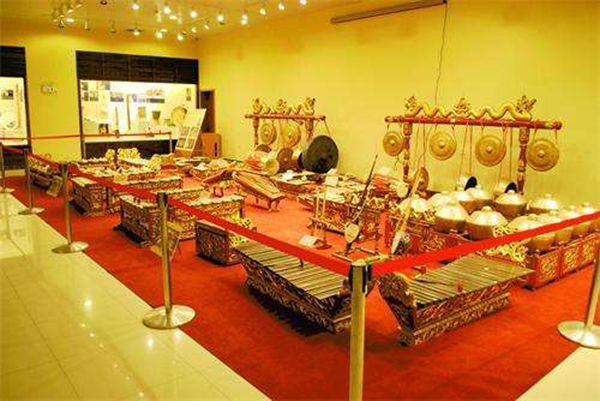
Opening hours: Monday to Friday from 9: 00 to 16: 00.
Route: Bus Xumin Line and get off at Gaoan Road Station of Zhaojiabang Road and walk about 760 meters.
13. Lei Feng Pavilion of Shanghai Jianqiao College
No.1111, Hucheng Ring Road, Pudong New Area
Building a Bridge Lei Feng Pavilion is the first Lei Feng theme memorial hall in Shanghai universities. It is divided into three sections: Lei Feng Story, Lei Feng Spirit and Lei Feng Building a Bridge. It displays the vivid image of Lei Feng in a diversified way, condenses the achievements of building a bridge to carry forward the moral education of Lei Feng spirit, and encourages teachers and students to further start from me, start from the small things around them, know Lei Feng, love Lei Feng, learn from Lei Feng, and radiate to Lingang, Pudong and Shanghai.
Opening hours: Monday to Friday, from 9: 00 to 17: 00 every day.
Route: From Longgang Express to Shuihua Road Station on Olive Road, walk for about 1.4 kilometers.
14. China Accounting Museum of Shanghai Lixin Accounting Institute
No.2800 Wenxiang Road, Songjiang District
China Accounting Museum is the world’s first accounting museum integrating academic and practical work. The museum is located in the beautiful Songjiang University Town, which is in line with the history and culture of Songjiang, the "root of Shanghai". The museum includes China exhibition hall, international exhibition hall, accounting hall of fame, temporary exhibition hall, collection library, literature database, research room, audio-visual room and other functional places, with a total construction area of 4,500 square meters and an exhibition area of 2,500 square meters. Generally speaking, it presents the functional form of "people, things and history", and comprehensively displays the accounting history of China and foreign countries and accounting celebrities who have made outstanding contributions to the accounting development in China in the 20th century.
China Accounting Museum has collected nearly 7,000 pieces of accounting historical relics and related materials at home and abroad, featuring Chinese and foreign account books, accounting supplies, accounting reports, various deeds and company files. China Accounting Museum serves accounting education and academic research and exchange, and has established extensive academic ties with accounting historians and related research institutions in more than ten countries and regions, including the United States, Italy, France, Britain, Canada, Australia, New Zealand, Japan, South Korea, South Africa, Hong Kong and Taiwan Province. The museum was jointly built by Shanghai Lixin Accounting Institute, Lixin Accounting Firm and Lixin Accounting Publishing House, and received strong support and help from all walks of life.
China Accounting Museum is divided into four parts: Preface Hall, China Exhibition Hall, International Exhibition Hall and Accounting Hall of Fame.
Opening hours: Tuesday to Friday from 9: 00 to 16: 00 (the museum is closed from Sunday to Monday, and the school is closed during the winter and summer vacations, and group visits are arranged separately).
Route: Take bus Songjiang No.17 to Wenxiang Road Station on Long Yuan Road and walk about 340 meters.
15. Fu Lei’s Life Exhibition Hall, School of Business and Foreign Languages
No.505 Guanhai Road, Pudong New Area

Thunderstorm and Rain Building-Fu Lei’s Life Exhibition Hall is located in the library of Shanghai Industrial and Commercial Foreign Languages Vocational College, No.505 Guanhai Road, huinan town, Pudong New Area. The exhibition hall will become the training and development base of oral French skills in this hospital. The exhibition hall of Fu Lei’s life contains pictures, videos, physical objects and other materials of Fu Lei’s life, which reflects the course and achievements of Fu Lei’s overseas study, rigorous scholarship, translation-oriented, versatile, and introduces his nearly 50 million-word translated works and more than a dozen versions of Fu Lei’s Letters. The information is rich and informative, and there is an image playing room. Shanghai Vocational College of Business and Foreign Languages will build the exhibition hall of Fu Lei’s life and build it into a training base for oral French skills, which can give full play to the geographical advantages for students to learn, carry forward Fu Lei’s academic spirit and inherit cultural traditions.


Opening hours: The museum is closed to the public on a daily basis, and an appointment is required. Telephone number is 021-68020687.
Route: From Huilu Special Line to Guanhai Road Renmin East Road Station, walk for about 30 meters.
16. Shanghai Publishing and Printing College Printing Museum
No.100 Shuifeng Road, Yangpu District
The printing museum of Shanghai Publishing and Printing College is located at No.100 Shuifeng Road, which was completed in 1998. It is one of the first national culture museums in Shanghai universities, one of the industrial tourism museums in Shanghai, and also a patriotic education base and a popular science education base in Shanghai. The exhibition hall covers an area of nearly 1,000 square meters and is divided into five parts: Origin, Development and Spread of Printing, Introduction and Development of Modern Printing, Shanghai Printing Industry, Printing Experience and Exhibition of Printing Exquisites. Through a large number of cultural relics, documents, physical models, simulation operations and digital images, the profound printing culture is vividly displayed, the ancient and splendid printing civilization is inherited, and the development of modern printing technology is experienced.
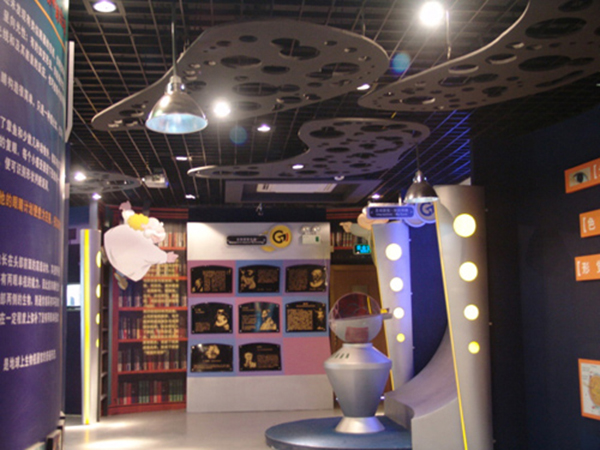
Opening hours: every Tuesday and Friday from 09: 00 to 11: 30; 14:00~16:00 (open by appointment on other working days)
Route: Take Metro Line 12 to Exit 4 of Longchang Road Station and walk for about 1.2 kilometers.
17-1. Exhibition Hall of Shanghai Institute of Sport
4th Floor, Lvwa Building, No.399 Changhai Road
The exhibition hall of Shanghai Institute of Physical Education is located at No.399 Changhai Road, which was completed on the occasion of the 50th anniversary of the school in 2002. It is located on the fourth floor of Lvwa Building, with an area of 840 square meters. The exhibition hall takes "great events, masters and buildings" as the main line, and its style is simple, elegant and plain. It is divided into exhibition areas such as Hall, Historical Exhibition Area, Building Exhibition Area, Master Exhibition Area, Wu Yunrui Thematic Exhibition Area, Competitive Sports Exhibition Area, Recent Development Achievement Exhibition Area and Multimedia Interactive Exhibition Area.
The exhibition hall of Shanghai Institute of Physical Education is open to the whole school and the society free of charge. And now due to the overall renovation of the green tile building, the exhibition hall has been completely demolished. According to the construction arrangement of high-level local colleges and universities in Shanghai, the school will build the "Shanghai Institute of Physical Education Sports Culture Exhibition Hall and Shanghai Institute of Physical Education School History Museum" on the fourth floor of Lvwa Building, which is expected to be completed by the end of 2019.
Opening hours: open by appointment; Tel: 021-51253043.
Route: Take bus 537/842 to Changhai Hospital Station and walk about 80 meters.
17-2. Wushu Museum of Shanghai Sport University
No.399 Changhai Road
The Wushu Museum of Shanghai Institute of Sport is located at No.399 Changhai Road (near Zhongyuan Road or Hengren Road). It was completed in Shanghai Institute of Sport on November 10, 2007, with a total area of 2,000 square meters. It is the first museum in the world to fully display the history and culture of Wushu. The completion of Wushu Museum is of great strategic significance for promoting traditional culture and cultivating national spirit.
There are more than 2,000 pieces in the Wushu Museum, including soldiers’ guns in the Qing Dynasty, warriors’ figurines in the Tang Dynasty, martial arts books, bronze weapons in the pre-Qin period, and stone carvings, plaques and badges related to martial arts in different periods.
Wushu Museum is divided into boxing hall, history hall, exhibition hall, stereoscopic cinema and digital multimedia interactive area. In the exhibition hall, there are more than 500 collections selected from the collection of cultural relics, and the profoundness of China Wushu is displayed from multiple angles by combining literature, pictures and multimedia display means.
Opening hours: every Tuesday to Saturday from 9: 00 to 16: 00. Tickets are free.
Route: Take bus 537/842 to Changhai Hospital Station and walk about 50 meters.
[Tips from Wenbao police]
During the visit, you should always be vigilant, pay attention not only to the exhibits, but also to the state of your belongings. It is best to travel together. Relatives and friends should take care of each other and remind each other, especially those who follow you for a long time and are close to you. Be sure to take good care of personal belongings, valuables and identity documents with you and put them close to your body.
(Original title "Shanghai University Museum Collection")






